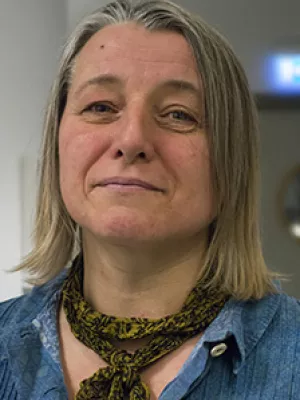
Charlotte Østergaard
Doktorand

Ethical dilemmas of stretching towards Others in fitting situations
Författare
Summary, in English
This article stretches the situatedness of costume fitting to include dressing and fitting into a connecting-costume in an urban environment. The author’s ambition is to study the ethical dilemmas that emerge in situations where participants are invited to fit into a costume that connects them to a co-wearer. Sara Ahmed writes that ‘bodies as well as objects shape though being orientated towards each other’ (Ahmed, 2010:245). This suggest that the object as the connecting-costume entanglement orientate the wearers towards each other and potentially towards different Others. However, in events and during specific situations the connecting-costume will most likely will expose and queer the wearers in an urban environment, hence the ethical dilemma is how does the researcher craft conditions in a way that makes the wearers fit-able to stretch themselves towards each other. One dilemma is that situating fitting in the urban environment suggests that several conditions most likely are out of the researcher’s control. Another dilemma is that even if the researcher also crafts the connecting-costume the question is if the researcher can predict or even imagine how the crafted materialities will craft wearers including how wearers fit one another? Eva Skærbæk writes about Løgstrup’s philosophy of the ethical demand that ‘ethics is the responsibility of I, the demand is personal’ (Skærbæk 2011:45). Skærbæk’s words suggest that research is an ethical call towards the researcher including that the researcher are responsible for what the research crafts. Hence, even if several conditions are out of the researcher’s control and event if the researcher cannot predict how the wearers respond to the conditions ¬– the researcher are responsible for how she craft conditions including that she in the specific situations must attend and respond to what the specific conditions crafts. This article argues that in order to create conditions for wearers to become fit-able to stretch themselves towards Others the researcher has ethical responsibility to have a critical awareness of the specificity of the situations. The researcher must critically be aware of, attend and respond to how the situation craft the wearers as well as that the researcher must learn from the responses of the wearers.
Avdelning/ar
- Lärare (Teaterhögskolan)
Publiceringsår
2022
Språk
Ryska
Sidor
35-35
Publikation/Tidskrift/Serie
Russian Fashion Theory
Volym
special issue on performance and clothing
Issue
66(3)
Dokumenttyp
Artikel i tidskrift
Ämne
- Performing Arts
Nyckelord
- costume
- Costumed perfomance
- costume thinking
- costume research
- artistic resaerch
Status
Published
Projekt
- Crafting material bodies - exploring co-creative costume processes